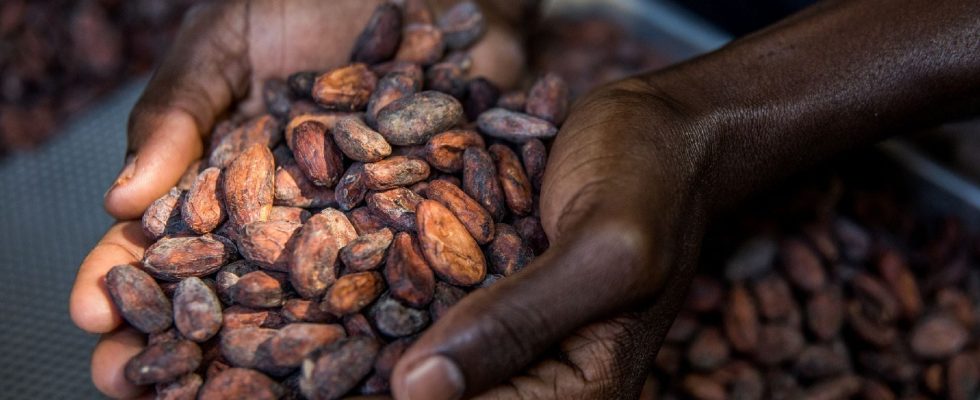For chocolate lovers, Easter egg hunting may soon seem like a luxury pastime. A luxury worthy of the price of cocoa beans which have literally exploded in recent weeks. Listed on the New York Stock Exchange, cocoa is flying from record to record: while it was flirting with $3,500 per ton last fall, it exceeded the $4,000 mark at the very beginning of January, pushing the threshold 5,000 dollars a month later then exploded to more than 10,000 dollars in recent days. A level never reached in history. Certainly, as is often the case in very erratic commodity markets, a good dose of speculation undoubtedly played a role in pushing prices to these stratospheric heights.
The bean victim of the climate big bang
But the increase in the price of cocoa beans is primarily due to structural effects, first and foremost global warming. As the experts from Global Sovereign Advisory (GSA) point out in a recent study, for three years, global production has been underperforming against a backdrop of climate change linked in particular to the El Niño phenomenon. Two consecutive years of drought in 2022 and 2023 have affected harvests. This year, it was the torrential rains which precipitated the development of diseases – brown plague – particularly affecting cocoa trees. In West Africa, particularly in Ivory Coast and Ghana where more than half of world production is concentrated, supply could fall to 1.7 million tonnes this year compared to 2.3 million in 2023…
A drastic fall which occurs in an international context where demand, driven by the consumption of chocolate, continues to grow. As a result, the global deficit of cocoa beans could reach 376,000 tonnes for the current season, a level never reached, warns the International Cocoa Organization. The only solution for traders and importers of beans: draw on stocks which are already at their lowest. Problem: the functioning of the bean market is mainly organized around forward sales. “Certain traders or intermediaries could default in the coming months, failing to obtain the quantities necessary to fulfill their contractual obligations,” fear GSA experts.
For the agri-food giants as well as the world’s chocolate makers, this decline in global production poses an almost existential question: where to get their supplies if the two largest African producers, Ivory Coast and Ghana, mark the not ? In this great upheaval, Latin America, the cradle of cocoa, is making a strong comeback on the market after having neglected it for decades. In Ecuador and Peru, vast cocoa plantations have emerged in recent years, displaying yields that would make small African farmers green with envy: almost 900 kilos per hectare in Peru compared to 500 on average in West Africa. . A performance which owes more to science and chemistry than to the climate God. Fertilizers, pesticides galore and above all a new hybrid variety, CCN51, much more resistant to diseases explain these miraculous yields. As a result, this variety now represents three quarters of the areas devoted to cocoa in Ecuador and a little more than half in Peru.
The deforestation dilemma
On the side of EU importers, a text nevertheless risks complicating the situation: the European regulation on deforestation which should theoretically come into force on December 31, 2024. For a certain number of agricultural products, including cocoa, manufacturers of the agri-food industry will no longer be able to sell on the European market products whose raw materials come from recently deforested areas. However, cocoa is one of the most deforesting crops. In Africa, it is estimated that Ghana and Ivory Coast have lost, over the last thirty years, 65% and 90% respectively of their forest cover, largely due to the development of cocoa plantations. “On paper, this regulation is a revolutionary step forward in world trade,” says Blaise Desbordes, general director of the Max Havelaar environmental label.
Except that on this subject, like so many others, the Brussels normative machine got carried away. Control impossible to carry out, bureaucratic hell promised to producers who do not necessarily have the capacity, nor the resources, to meet these new requirements. “There is a real risk of seeing the development of fraudulent exports from countries like Sierra Leone, Liberia or even Cameroon, where forestry revenues are still enormous,” recognizes Blaise Desbordes. While the European Commission is bracing itself over this regulation, in Brussels, lobbying from agri-food giants is intensifying to demand a postponement of this new text. Time to find new sources of supply to satisfy the ever-devouring appetite of chocolate lovers.
